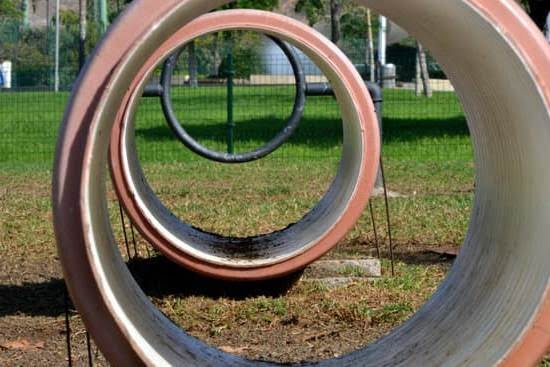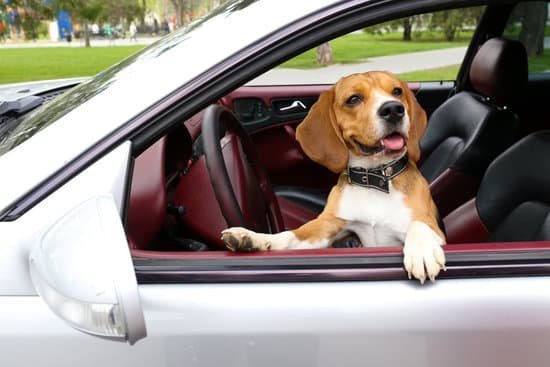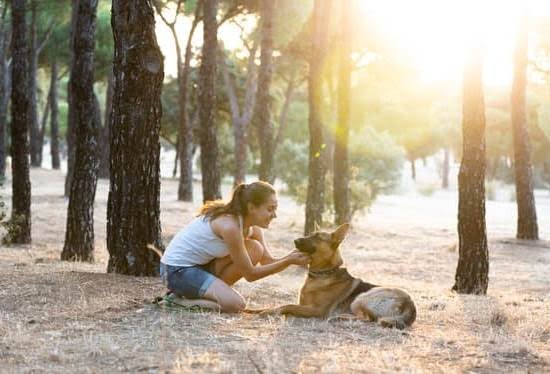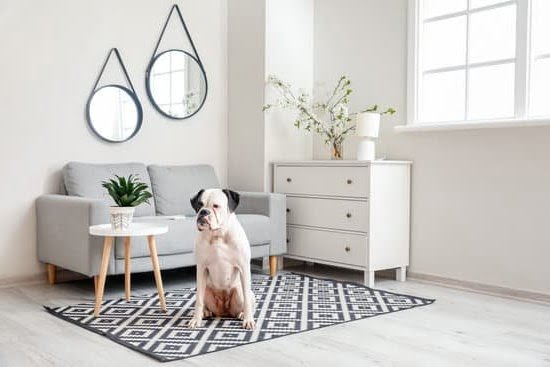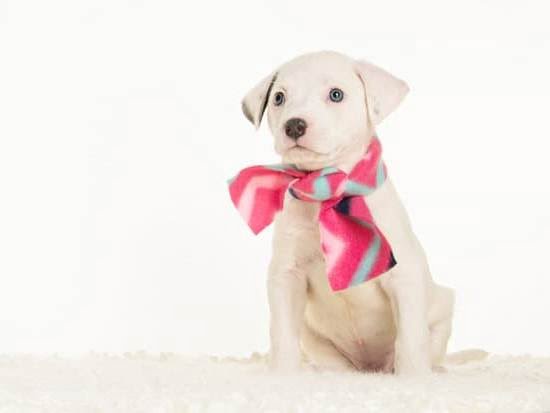Introduction
Potty training an older dog can present some unique challenges. Older dogs tend to have a longer history of inappropriate elimination habits, making them more stubborn and difficult to train. Additionally, older dogs may suffer from cognitive decline, making it harder for them to pick up on the signals and cues associated with proper toilet behavior. Owners must be patient and use consistent positive reinforcement in order to potty train an older dog. Here are some steps for helping owners potty train their stubborn older dogs.
Step 1: Establish a Potty Schedule
The first step in potty training an older dog is establishing a potty schedule that works with their lifestyle and growth levels. Start by taking note of when your pup wants to go out or is eliminating indoors, then create a plan that works around those times as well as make sure your pup will get enough outdoor time each day. Make sure to give your pup plenty of potty breaks while they are learning so they can develop healthy elimination habits without feeling overwhelmed or frustrated.
Step 2: Create Potty Zones in the Home
Once you’ve established a potty schedule, it’s important to create “potty zones” within the home—rooms or areas dedicated specifically for your pup’s elimination needs. These zones should be easy for your pup to access but also offer privacy and comfort where appropriate. Keeping these zones clean is essential for maintaining good hygiene and making training more successful.
Step 3: Offer Positive Reinforcement for Good Behavior
Positive reinforcement is key when it comes to encouraging good behavior from an older dog during potty training sessions. Praise, treats, playtime—whatever motivates your pup best! Make sure they understand that they will be rewarded when they eliminate outdoors (or stay inside designated areas) instead of staying in unwanted places indoors or outside the home altogether. Consistency is key here; only offer rewards after each successful visit outdoors so that they understand what behavior you expect from them!
Preparing Your Home and Dog
The first step when potty training a stubborn older dog is to understand your dog’s behaviour and habits. It can be helpful to observe their routine and try to take note of any triggers or cues that they show when they need to go outside. When you see your dog pacing, sniffing around, or engaging in any other behavior which indicates they may need to eliminate, you should immediately pick them up and bring them to the designated bathroom spot for potty time. This helps instill in your dog that this is their spot for elimination. Additionally, before commencing the potty-training process, it is important that you check that all rooms in your home are safe and secure from accidents. Make sure there are no low-hanging cords from electrical appliances, as well as no hazardous chemicals where the pup could reach if curious enough. In addition, keep off-limits any areas which contain furniture or carpets that may easily soak up messes if an accident does occur. Finally, you should keep backup supplies like lint rollers and cleaning supplies nearby in order to make cleaning much easier if there is an accident. All these steps will help ensure that not only do your activities as a trainer go according to plan but also reduce the safety hazards posed by having a puppy learning how to toilet train inside your home.
Establishing a Potty Training Plan
Potty training an older dog can seem like an especially daunting task, however, with the right plan in place it is possible to have your pooch out of diapers and housetrained in no time. An important first step to take while potty training an older stubborn dog is to establish a timeline and determine how often the pup needs to use the restroom. Depending on the breed and age of the pup, this could mean scheduling potty breaks every 1-4 hours. Additionally, potty session timing should be associated with times during which your pup would usually need to go – meals/snacks, playtime or waking up from napping all make for excellent cue for when to go outside for a bathroom break. Be sure to take into account any necessary accommodations if your pooch has any medical issues that might impede the process. Once you’ve established an appropriate timeline for when and how often to schedule these potty breaks, be consistent about adhering to it as much as possible.
Using Positive Reinforcement to Encourage Correct Behaviour
Potty training an older dog that’s stubborn can be frustrating, but the process doesn’t have to be. With patience and consistency, you can get your pup on track in no time.
The key to potty training a stubborn older dog is positive reinforcement. As soon as they do their business in the correct place, reward them with verbal praise and treats so they can understand what is being asked of them. If possible, give them extra treats when they use the same spot consistently over time. This will help teach your pup that going to the toilet in the right spot results in rewards while demonstrating how positive reinforcement reinforces desired behaviors.
You’ll also want to create a set routine for potty breaks, one that ensures enough trips outside throughout the day for your dog to follow through with proper toileting places. You’ll also need to ensure you are taking your pup out often enough for bathroom breaks and exercise opportunities and avoiding any distractions during these times like playful children or dogs running around—lack of focus could reduce even further an adult’s ability to pay attention or learn effectively.
Try using a leash as well during these trips so you can keep an eye on your pup, as well as practice basic commands such as “come” and “sit” while outside so they can stay more focused on learning and do not forget why they are outside at all times – which is to go potty! Additionally, take note of signs that your puppy might need to go (like sniffing the ground or pacing around) – this way you can quickly recognize those tell-tale signs before it’s too late! Finally, it goes without saying—be sure to always clean up any accidents inside or out, doing so in a matter-of-fact manner with no harsh reprimands in order not reinforce any negative behavior.
Keep Track of Accidents
Potty training an older, stubborn dog is a difficult task, and it is important to document the progress being made with your pup. Make sure to keep track of every accident that he has inside the house and when it happens – this will help you find patterns in his behavior and determine when he needs to go out most. Through this data collection process, you can also adjust the training methods based on his unique needs. A potty journal or calendar is beneficial for tracking these accidents and any other success during the potty-training process. It may seem tedious but noting what works and what does not is helpful for staying organized during the time-consuming training journey.
Rewarding Good Behavior
It’s also vital to reward your dog any time he successfully goes outside to use the bathroom – no matter how small or big the milestone! Using positive reinforcement by providing treats or toys motivates your pup to keep up good habits, while also building a strong bond between you two. Together, keeping track of accidents while rewarding good behavior is an effective approach that encourages your older dog’s potty-training ability; so stay patient, consistent and vigilant throughout this process.
Rewarding Good Behaviour and Ignoring Bad Behaviour
When potty training a stubborn older dog, it is essential to focus on highly rewarding good behaviour and ignore the bad behaviour. To reward good behaviour, have treats such as pieces of deli meat or small crunchy treats available and give them to your dog when they eliminate outside in the spot that you have designated as their bathroom. Be sure to use these rewards immediately after they’ve done what you want so they can learn to associate performing the desired behavior with getting a reward, which will make them more likely to do it again in the future.
Ignoring bad behaviour can be difficult but is key for success. As soon as your dog does something wrong like peeing inside the house, stay neutral and don’t show any emotion (positive or negative). Avoid scolding or punishing them since this may actually increase their fear and make it harder for them to trust you. Instead, simply remind them of what they should be doing (going outside) and lead them out if necessary. Eventually, with consistent positive reinforcement for going potty outside, your stubborn older dog should pick up on the correct behavior and start coming to you first when they need to go.
Reassessment
Potty training a larger, older dog requires extra patience, consistency and commitment. They may have developed bad habits overtime and be resistant to change. Change can be stressful for dogs, so take it slow when revising potty training plans.
Start by looking back at your current potty training plan and identifying areas where you can make improvements or changes. Consider your dog’s lifestyle and routine to determine if there are any underlying issues that might have caused them to struggle with potty training in the past. Is there a lack of exercise or consistency? Are they getting enough attention? Addressing any dietary or health problems that could also be causing resistance may help encourage better adherence to the plan going forward.
Most importantly, keep in mind that a stubborn older dog’s progress will likely be gradual and challenging at times, but with a bit of perseverance you can get them back on track. Make sure to provide verbal praise or rewards whenever your pup does well during potty sessions; this will help reinforce positive behavior and reinforce the idea that following the rules produces rewards. You could also try gradually increasing their outdoor time as well as introducing scheduled breaks throughout the day that involve consistent trips outside. This helps them understand when it’s time for bathroom breaks without having to rely solely on verbal cues from owners.
Preventative Solutions
When potty training an older dog, the best approach is to start with preventative solutions. If the dog is too stubborn and set in their habits, it can sometimes be impossible to train them out of bad behaviors. Fortunately for owners of stubborn older dogs, there are several solutions that make potty training easier.
One such solution is using dog diapers. Dog diapers fit between your pet’s legs and around their waste, so they always know where to go when they need to use the bathroom. This helps create a more visually appealing environment in your home and keeps messes contained even if your pet has a particularly difficult time understanding their housebreaking rituals.
Dog doors are another great preventative solution for stubborn older dogs. By installing a doggy door in your home, you allow your pet to come and go as they please while ensuring nothing else in your home get soiled or damaged by accident. Not only does this help keep your home free from mess-ups but it also helps minimize frustration with repetitive commands as now you won’t have to rely on verbal queues for something as basic as going outside!
Finally, if you have tried all other options and none has seemed successful, then look into potty trays designed specifically for old age pets. These trays contain natural litter scents that can attract even the most stubborn pets and encourage them to relieve themselves properly without relying on verbal command. Plus, these usually come with convenient ways of disposing of the litter afterwards – something that makes clean up a breeze!
Conclusion
Potty training an older dog may seem like a challenge, but the rewards are worth it. Not only does your dog feel more secure in knowing that he has a designated place to urinate and defecate, but it also makes life easier for you – no more stepping in puddles or sweeping up messes! The key to potty training success is consistency and patience. Through consistent rewards, such as verbal praise and treats, as well as confinement or crate training and frequent trips outside, you can teach your stubborn dog to do his “business” in designated places. With the right tools and techniques, you can enjoy all the benefits of potty training an older dog. Not only will your house stay clean and smelling better, but you will also build a stronger bond with your four-legged companion by understanding how to effectively potty train an older dog.

Welcome to the blog! I am a professional dog trainer and have been working with dogs for many years. In this blog, I will be discussing various topics related to dog training, including tips, tricks, and advice. I hope you find this information helpful and informative. Thanks for reading!

